Must-have cycling clothes and accessories: from head to toe

Just as important as the ride itself, is the rider who mounts it. And what better way to pamper yourself, the dedicated cyclist, than by putting some thought into your cycling outfit?
The truth is - clothing that's made for cyclists is not just some marketing trick. While it's not mandatory, proper cycling clothing and accessories do make the ride safer and more comfortable. It can also improve your performance by ensuring you don't waste energy as you ride.
So to make your cycling adventures a breeze and help you cover distances you never even dreamed of before, we've compiled a list.
It's the ultimate guide, if you will, of cycling clothing and accessories that you cannot do without. We'll let you know why each item on the list is important so that you can easily become a proper cyclist - from head to toe.
Cycling Clothing
1. Cycling jersey

Why can't a simple cotton t-shirt do the trick, you might ask? Because you'll be soaking wet with sweat and it will take forever to dry up again.
A cycling jersey, on the other hand, looks just like a t-shirt but is made of moisture-wicking technical fabric (or a blend incorporating Merino wool) with fibers designed to pull moisture from the skin.
Cycling jerseys are especially useful because of:
- Rear pockets for your most-prized possessions.
- The high neckline to protect you from unnecessary sun exposure.
- The front zipper that lets you close or open the jersey as far or low as you'd like, depending on the weather.
Most commonly, cycling jerseys have short or long sleeves (for winter cycling). However, you could get a jersey with no sleeves at all for especially hot conditions. Keep in mind the different types of jersey fabrics, ranging from ultra-light to thick windproof and water-resistant. If you're looking for a universal type of jersey to start out with, try a medium-weight short-sleeved top.
Price: There are cycling jerseys that cost as little as 7€. But if you prefer a long-term investment, we suggest trusting well-established brands like Assos or Black Sheep Cycling with high-quality jerseys around 150€.
2. Base layer

Now, why would you need something under your cycling jersey, if it already repels moisture?
The thing is - layering is just as important. Your jersey is only one part of a three layer system, and you'll also need a next-to-skin base layer and a jacket (we'll cover that next).
Here's what the base layer does:
It moves the sweat away from your skin to the jersey (which is great during the summertime), as well as provides insulation when it's colder. That's why during the summer you'd stick to light materials (ideal for year-round cycling), but during the winter you'd opt for thicker undershirts made of Merino wool. At the same time, a well-constructed cycling base layer can be worn both on cold days, as well as on hot ones.
At all costs, avoid base layers that are made from cotton, especially in cold temperatures. Cotton absorbs and retains heavy amounts of moisture, so if you sweat even a little bit, you'll spend the ride soaked in your own sweat. Cotton base layers can also increase the possibility of a rash.
What's also great about base layers is that they have compression-like characteristics that are likely to improve blood circulation. This aids blood flow, delays muscle fatigue and increases performance.
Base layers come in a variety of forms. Pick yours depending on sleeve length, fabric, weight, collar height, etc.
Price: The base layer is in direct contact with your skin, so investing in a high-quality base layer can be vital for your comfort. Spare somewhere between 17-90€, and you'll be able to afford an adequate base layer.
3. Cycling jacket

A cycling jacket is the final layer of your upper body outfit that is made from variations of polyester, Lycra, Nylon and other synthetics. There are three main types of jackets you can pick from:
- Thermal jackets that provide insulation for cold and dry weather conditions.
- Hard shell jackets. Classic cycling waterproof jackets, often made from breathable fabrics to avoid sweating inside.
- Soft shell jackets that are both insulating and water-resistant.
When considering the fit, look for a jacket that keeps close to your body, while still allowing some room for your other layers underneath. The jacket should be tight enough, but not restricting your movement. Make sure the sleeves are long and that your lower back is covered. Check if the collar seals securely around your neck. Notice if the lining is soft enough - otherwise, it will rub on your neck and bother you throughout the ride.
During spring or autumn, you can switch to wearing a gillet or a vest - which is basically the same as a sleeveless cycling jacket. In combination with a long-sleeved jersey, a gillet will keep the wind away from your torso.
Price: Waterproof jackets that breathe well don't come cheap and can cost about 160-350€. Windproofs and softshells tend to be cheaper, but if you want a quality product, you're still looking at about 100€.
4. Cycling shorts

This is perhaps the one clothing item that defines cycling culture the most. Cycling shorts differ from regular shorts by the added stretch for easier movement, as well as a lack of seams and padding (also known as “chamois”) for the crotch area to reduce friction and wick away moisture.
The chamois is actually the most important part of the shorts that takes responsibility for your comfort. The chamois can come in different forms - it can be a single piece foam or a multi-layered anti-chafing, anti-bacterial, and anti-many-other-things material on the top of the lining.
The two most popular forms of cycling shorts are:
- Waist shorts - held up by an elastic waistband.
- Bib shorts - held up by a bib (built-in braces). Wear them with a jersey, and they'll look like any other type of cycling shorts.
Bib shorts are considered to be the more comfortable option between the two since there's no pressure in your waist-area, the elastic band doesn't dig into the skin, and there's less chafing.
Bear in mind though that bib shorts were created for riding - so as comfortable as they might be when you're out on the road, they might feel completely different when you're walking around in them.
There are other types of cycling shorts out there as well, like mountain bike shorts with a loose outer short layer or skorts - a type of cycling shorts for women where the spandex is covered by a skirt.
Price: You'll find plenty of lower-end options that cost around 10-30€, but if you're looking for something sturdier, try trusted brands like Garneau and Castelli. Also a good price deal you will get if you are considering to buy a cycling kit with matching shorts and jersey.
5. Cycling tights

When the temperature drops, but there's still training to do - opt for cycling tights. They are a great way to keep your lower body at temperature optimal for performance, while still feeling comfortable enough to cycle.
Cycling tights vary based on different weather conditions. For colder temperatures and wet weather, look for tights that cover the entire leg to your ankles. When the weather gets warmer, pick three-quarter leggings that extend to mid-calf and are usually made of fairly light Lycra. There are types of tights that come with ankle zippers - these are a good pick for layering and make removing tights over shoes easier.
Many cycling tights come with a built-in chamois, just like cycling shorts. However, some tights don't have any padding so that they fit over a pair of cycling shorts for layering purposes.
Price: From as low as 14€ to 380€ and higher.
6. Cycling socks

A good pair of cycling socks will make sure your feet don't swim in sweat while you're out on the road. In winter, sweaty feet could mean catching a cold. In summer, it could lead to painful blistering. Either way - you won't be a happy rider.
When picking out cycling socks, keep in mind that they should be close-fitting with as few pressure points as possible to avoid friction. That way, your feet will stay comfortable over extended periods in the saddle.
Material-wise, synthetic fibers are preferred. Natural fibers like cotton absorb moisture and expand, leading to rubbing, blistering, and hot spots. Synthetic materials, on the other hand, adjust to the shape of the foot, wick moisture more effectively and often balance the levels of bacteria on your skin, reducing irritation.
Or if you're looking for an alternative to synthetics, Merino wool is your pick. It wicks moisture and dries fast, besides it insulates even while wet - which is great for cycling when it's pouring outside.
Price: You can freshen up your outfit with a good pair of socks for 10-23€.
7. Cycling shoes

If you're an occasional cyclist who travels a couple of kilometers from home to work, just about any type of shoe will do. However, the more time you spend on a bike and the longer distances you cover, you'll only benefit from shoes that are designed specifically for cycling.
Modern cycling shoes are designed to work with clipless pedals that temporarily connect the shoe to the pedal using cleats. They also have stiffer soles which makes it easier to pedal and allows for maximal efficiency.
There's a large variety of cycling shoes - you should pick yours based on your riding style:
- Road cyclists should choose a lightweight, aerodynamic model with slick soles.
- MTB cyclists will get the best out of shoes with durable soles and ample tread for a better grip on the trail.
- Commuters or casual riders can stick to a sports shoe that looks like a cycling shoe, but is casual enough for your day-to-day errands, walking to work, etc.
In case you'd like additional protection against rain, slush, and wind, use toe or shoe covers that cover a part of the shoe or your entire footwear, and even a part of the ankle.
Price: Cycling shoes are definitely a good investment because they are the basis (literally) for your cycling. You'll find good shoes under 90€, or you can spend as much as 430€ on a good pair of Vittoria Velars.
Accessories
8. Gloves

Cycling gloves are another item of clothing that is rooted deep into tradition. They can come with short-cut fingers for summertime, but you'll also need long-finger gloves when the winter comes.
There are plenty of other important reasons why cyclists should wear gloves, like:
- Enhanced grip and a better feel and control of the handlebars.
- Extra cushioning with padding or gel inserts.
- Protection for your hands in case of a crash. You don't want to pull off chunks of skin when sliding down the pavement.
Snigger all you want, but cycling gloves also prove useful in case of a runny nose when you need something to wipe it with on the road.
Price: You'll be able to find a good pair of gloves for 15-40€.
9. Helmet

A cycling helmet is the cornerstone of your safety, so if you're having thoughts of skipping wearing one - stop right there. In most countries, wearing a helmet is not required by law. However, the numbers of accidents speak for themselves.
In the UK alone, you are 15 times more likely to be killed on the road if you ride a bike than if you drive a car. The bottom line here is - wear a helmet.
Pick your helmet based on the type of cycling you plan to do most often because different disciplines require different helmets. The most popular types of helmets are:
- Recreational helmets (also called multi-use or casual)
- Road bike helmets
- Mountain bike helmets
The fit of the helmet is essential, so look for one that fits your measurements. To find the right size for you, wrap a flexible tape measure around the largest portion of your head. The number of centimeters (or inches) will be the number used to determine your helmet size.
Price: The lighter and better-ventilated helmets are more expensive. For a stylish option, the Nutcase helmets are an excellent choice (80€). Or take a look at Giro bike helmets (starting from 35€) for a good overall option.
10. Cycling glasses

Imagine going down a steep hill and picking up the pace, when a fly hits you right in the eye. Yowza! That's the thing with cycling glasses - they'll protect your eyes not only from bugs but also from:
- Harmful UV sun rays. Most cycling glasses are UV-protected. They'll also reduce the glare of the sun and provide better visibility.
- The weather. Avoid watery eyes in case of strong wind and improve visibility if cycling in the rain or snow.
- Flying dirt. Cycling glasses will keep sand, small rocks, and other flying debris out of your eyes.
Besides glasses that come in different styles and sizes, there's a variety of lenses to choose from, too. Photochromic lenses that change color depending on the weather are a popular choice. They will adjust to your surroundings and become darker when the sun is out and clearer when it gets cloudier.
Price: While the prices vary with around 250€ between the cheapest and most expensive options, there are plenty of awesome cycling glasses out there just under 60€ .
11. Cap/headband

The right kind of headwear is not only practical - it's a stylish addition to your cycling outfit.
What makes the cycling headwear different from other athletic apparel is the design. The majority of cycling-specific caps and headwear is created to be worn under a helmet so it will be thin, low-profile, and will fit snugly on your head.
For winter rides, pick a cap that will add insulation and keep your head and ears cozy. In summer, a headband will keep the sweat out of your eyes and wick moisture away to help you cool down.
Price: There's no need to spend a lot. You'll be able to find a good cycling cap or a headband around 18€.
12. VELOSOCK bike cover
Your bike needs a cycling outfit, too, and not just because it looks good. A bike cover protects your ride from scratches and any damage caused when transporting it to and fro.
Besides, when you use a bike cover, any debris that falls off the wheels or the frame after a really good muddy race stays inside the cover instead of making a mess in the interior or the trunk of your car.
The same goes for storing the bike inside your apartment or a hotel in case you're traveling. With VELOSOCK, any dirt that sticks to your bike remains inside the cover. Less cleaning up to do, and no need to worry about the bike leaving nasty marks on the floors or walls of your hotel room.
The VELOSOCK bike cover is made of stretchy fabric and fits 99% of all adult bikes. It's super easy to clean, too - just turn the cover inside out, throw it in the washing machine, and you're good to go.
VELOSOCK comes in a variety of modern designs and vibrant colors, so there's plenty to choose from. For the competitive cyclists looking for something to protect their precious road, MTB, or triathlon bikes, take a look at the full covers that envelop 100% of the bike.
Price: One VELOSOCK indoor bike cover will cost you 10 German Big Macs - starting from 49€.
13. Cycling warmers

When fall approaches, we're on the lookout for warmer cycling outfits. In case you don't want to switch to your long-sleeve jersey and winter jacket just yet, cycling warmers are a great addition to your ensemble.
First of all, warmers are versatile. They let you adjust your outfit to different temperatures and weather conditions in just a couple of seconds.
Say, you're starting your ride early in the morning when it feels a bit nippy. After the sun comes out and you've been riding for a couple of hours, you'll begin to warm up. In that case, it's super easy to take the warmers off and stuff them in the pocket of your backpack or jacket. Generally made of Lycra, warmers are quite lightweight, so it's not a problem to carry them around and put them on again if the temperature drops.
Here are the three type of warmers you're likely to encounter:
- Arm warmers. Designed to be used in combination with a short sleeve jersey, these warmers cover the part of your arm from the wrist to just below the shoulder.
- Leg warmers. Used with cycling shorts and go from the ankle up to the middle of the thigh.
- Knee warmers. A shorter version of leg warmers that cover the knee joint.
Price: You're likely to find a good pair of cycling warmers somewhere between 20-35€ .
14. A cycling backpack

If you're not able to stuff your belongings in the back pockets of your jersey, you'll need a good cycling backpack. Finding the right pack can be time-consuming as there are plenty of options to choose from.
Do a little bit of research and start by defining what your cycling needs are. What type of cycling will you be doing? Will you be:
- Commuting? If you're mostly cycling to work or school, choose a commuter backpack that has a padded compartment for your laptop, books, etc. Cycling backpacks sit on the rider, so no fixation is needed to the bike.
- Mountain biking? MTB backpacks have a great harness system so that when you're cycling off-road, the backpack stays in place no matter how much you're moving around on the bike. Quality MTB backpacks hug the rider's body and come with shoulder, waist, and chest straps.
- Road cycling? For pros and cycling enthusiasts alike, something lightweight will do just fine - like a hydration pack that contains a reservoir to transport water and make drinking convenient and efficient. With most hydration packs, you don't even have to stop or slow down to take a sip of water.
Also - size matters. When you're cycling, you need to feel comfortable with the pack on your back. So pick a bag that fits the rest of your gear and cycling style, so that it doesn't rub on the back tire or push you into an awkward position.
Price: As with everything else in your cycling outfit, the cost of your cycling backpack will vary depending on its features - what's the size, the quality of material, is it waterproof, etc. However, the ballpark estimate for the price of a durable cycling backpack is 70-100€.
15. Chamois cream

Wait… what? What's a type of cream doing in the clothing and accessories list?
It's pretty simple, really. Chamois cream is like the middleman between your skin and the cycling outfit. It comes in different forms (balms, creams, even powder) and is used to minimize friction, prevent chafing, saddle sores, as well as infections. In some cases, chamois cream even alleviates pain and comes with a cooling effect.
The cream was originally made to be applied directly on the padding of the cycling shorts, made of chamois leather. However, with every additional wash, the leather became dry and stiff. Hence - the cream to soften it.
Nowadays, the padding is made of synthetic materials, but the cream still remains a great help to cyclists who want to avoid skin rubs and abrasions in their nether regions.
Price: A tube of chamois cream will cost somewhere around 10-20€. If you don't know which brand to pick, start with something renowned among cyclists, like this creme by Assos.
And there you have it - the complete cycling clothing guide from top to toe. Think we missed something?
Let us know in the comments what other items should be added.
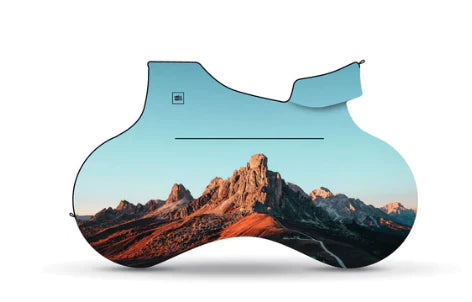
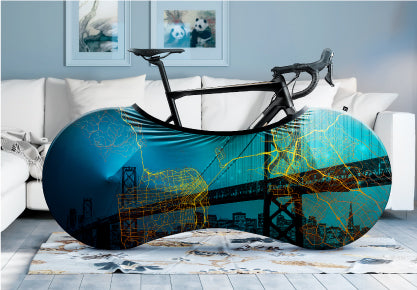
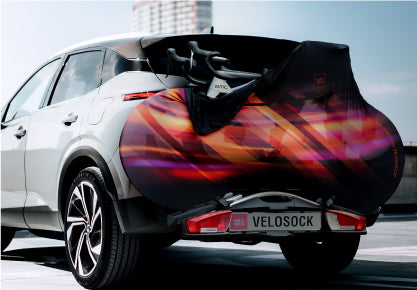
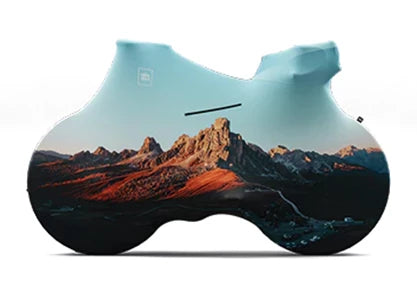


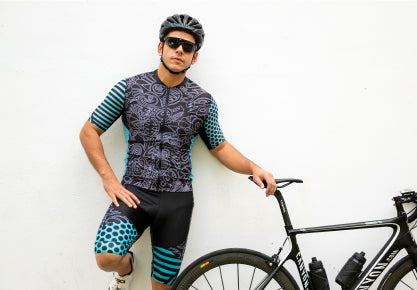


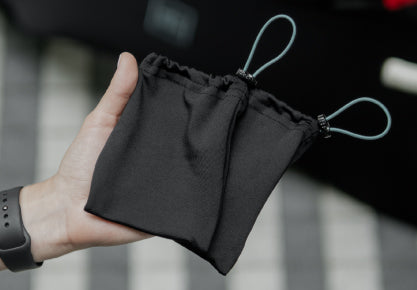
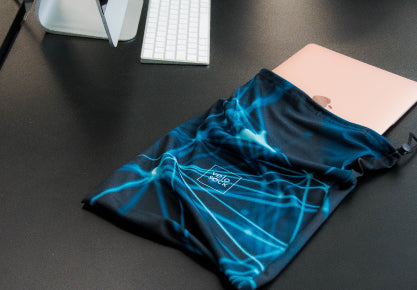
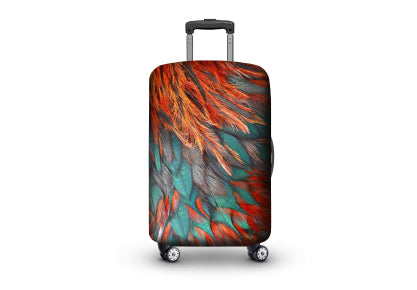
















Great article.
Great article.
This was lovely to read.
Leave a comment